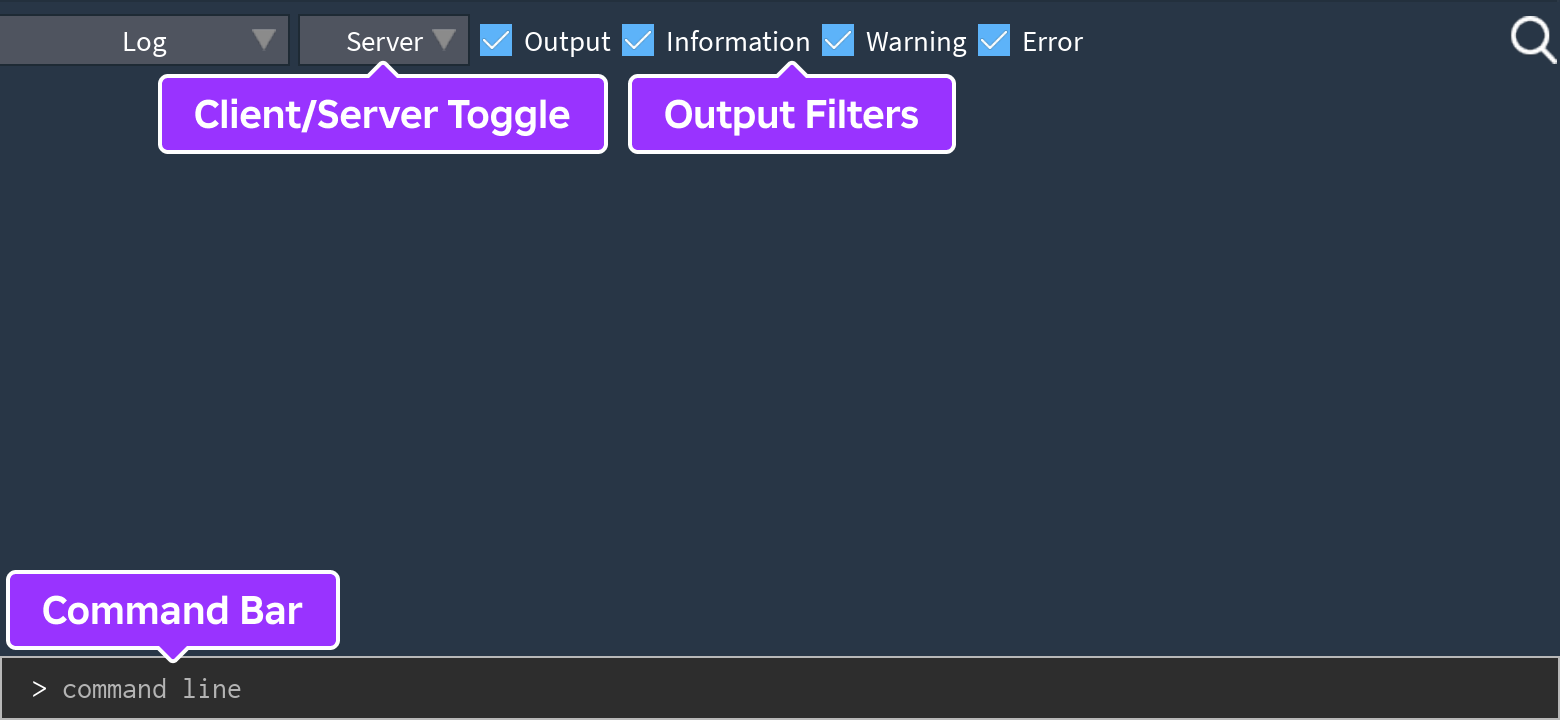The Developer Console is a tool for debugging your experience when testing in Studio or running it in production. It shows log messages and errors similar to the Output window and detailed information on Memory, Network, and more.
Opening the Console
You can open Developer Console during a testing or a live experience session using any of the following ways:
- Press F9.
- Type /console into the chat.
- Use the in-experience menu:
Open the in-experience Roblox Menu.

Select the Settings tab.
Scroll down to Developer Console and click Open.
Console Sections
The shortcut bar at the top of the console shows the number of critical errors and warnings, client memory usage, and average ping time; click any of these to jump to its corresponding section in the console. Below the shortcut bar is a series of tools as outlined below.

Log
The Log tool shows diagnostic messages from scripts.

Using the client-server switch, you can toggle between Client and Server views:
- The Client view shows output from client-side LocalScripts and/or Scripts with RunContext set to Enum.RunContext.Client. Anyone running an experience can view local output messages.
- The Server view shows output from server-side Scripts (RunContext set to Enum.RunContext.Client or Enum.RunContext.Legacy). Only the experience owner or group members with editing permission can view server output messages.
Memory
Developer Console provides two tools for monitoring memory usage, including:
Memory — View real-time memory consumption by usage categories, including memory usage by both your custom components and the engine internal processes.
Luau Heap — Create snapshots on the heap memory, which refers to the memory allocation to your scripts. This tool provides various memory allocation views to help you identify current memory allocation and issues from different perspectives, such as object types and engine classes. It also allows you to create multiple snapshots to compare differences in memory usage over time.
For more information, see Memory Usage
Network
The Network tool shows the number of web calls that the experience has made. This includes explicit calls made through HttpService and web requests made by Roblox services like DataStoreService. The Network tool has two sections:
The Summary section lists a summary of all the web calls by type. Each type has details on the number of requests, the number of failed requests, and the amount of time that the request took.
The Details section lists each individual web call. Each row shows the HTTP method, such as GET or POST, along with the status code, time to execute, request type, and request URL. Click on a web call to see its response details, for example:
{"Version":"1.1":"Content":{"Headers":[]},"StatusCode":"OK","ReasonPhrase":"OK","Headers":[],"TrailingHeaders":[],"RequestMessage":null,"IsSuccessStatusCode":true}
Script Profiler
The Script Profiler tool allows you to record profiling sessions of all running scripts and view their CPU time costs with custom recording and display settings. It's helpful for identifying scripts that take up the most CPU resources and slow down the performance. For more information, see Script Profiler.